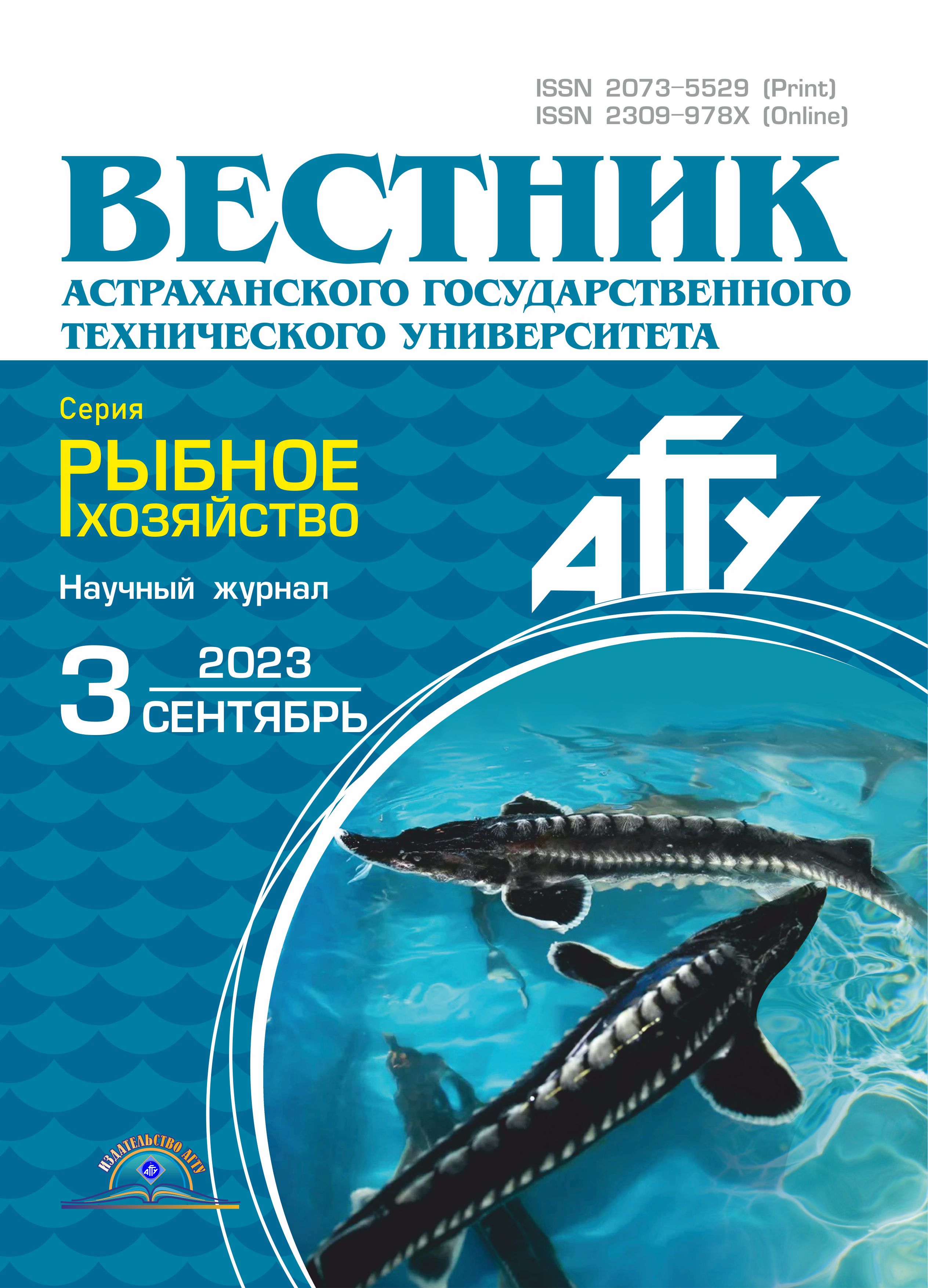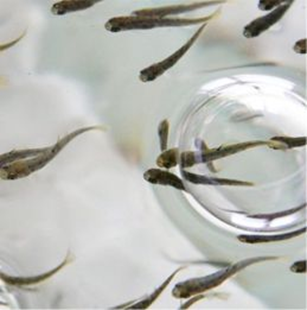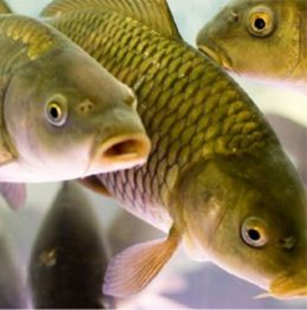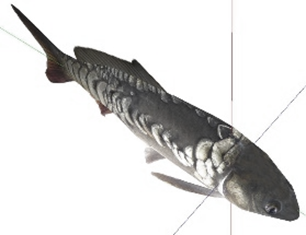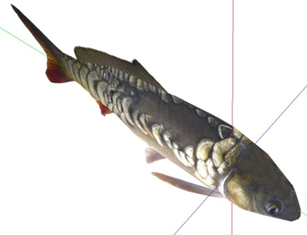Россия
В процессе исследований биомеханических характеристик гидробионтов возникает необходимость в применении теории подобия живых объектов. Наряду с теорией подобия соблюдается теория размерностей. Рассматривается мультифизическое подобие гидробионтов одного вида, основанное на теории физического подобия А. А. Недоступа. Одной из задач исследования механики и гидродинамики живых систем (гидробионтов) в водной среде является автоматизация сбора статистики с последующей визуализацией характеристик гидробионтов с применением технологий дополненной реальности. На основании теории подобия разработаны правила физического подобия, получены критерии подобия в отношении геометрических, механических, гидроакустических, гидродинамических, термодинамических, оптических характеристик гидробионтов. Важная составляющая подобия состоит в сохранении у модели физической природы явлений оригинала. На основании масштабов мультифизического подобия гидробионтов определены критерии подобия гидробионтов. Рассмотрено решение задач описания биомеханики гидробионтов в установках замкнутого водоснабжения, где одновременно выращиваются гидробионты только одного вида. Значимость исследований биомеханики гидробионтов в определенных условиях обитания, в нашем случае в искусственном замкнутом пространстве, при искусственных освещении, кормлении, системе очистки и пр., обуславливается необходимостью повышения рыбопродуктивности и экологичности рыбоводства, что требует автоматизации процесса выращивания. Задачи автоматизации требуют предварительного математического описания процессов с целью построения имитационных моделей. В свою очередь, для математического описания процесса роста объекта выращивания необходим вывод математических зависимостей, связывающих целевые характеристики гидробионта с исходными данными условий разведения и набором характеризующих параметров самого объекта, в том числе и поведенческих.
гидробионт, установка замкнутого водоснабжения, автоматизация, имитационная модель, правила физического подобия, мультифизическое подобие
Introduction
Hydrobionts live in an aquatic environment, and to a large extent their behavioral characteristics are inaccessible to us. They can be rarely observed directly. And yet we need to know the factors that affect their growth, movement and reproductive function, behavior, and how these factors, in turn, affect the biomass. Our task is to evaluate and manage fish farming. The lack of machine vision technologies with subsequent intelligent analysis of the data obtained using mathematical models describing the mechanics and hydrodynamics of living systems (hydrobionts) in the aquatic environment, automation of statistics collection [1] with subsequent visualization of the characteristics of hydrobionts using augmented reality technologies is a scientific problem that this study is aimed at solving. Studies of fish behavior and the development of technologies for the cultivation of aquatic organisms in the field of fisheries science received special support from Fishgov [2]. Questions of the behavior of hydrobionts have attracted many theorists and experimenters, engineers and biologists, fish breeders and commercial fishermen, acoustics, that is, those who work in industrial aquaculture. The recent overexploitation and disappearance of several fish populations around the world, and the resulting social consequences for many fish farmers have become a challenge. Much attention in the last decade has been focused on mathematical modeling of behavioral characteristics of individual species, often ignoring a number of factors that affect the growth and life expectancy of aquatic organisms. Undoubtedly, the study of fish behavior plays a key role in understanding the variability of the results of resource use, during monitoring surveys in the recirculation aquaculture systems (hereinafter referred to as RAS), as well as in the development of technological techniques to increase the productivity of RAS and
reduce the impact of hydrobionts waste on the RAS ecosystem.
A recirculation aquaculture system (RAS) is a technical system for growing fish (Fig. 1).
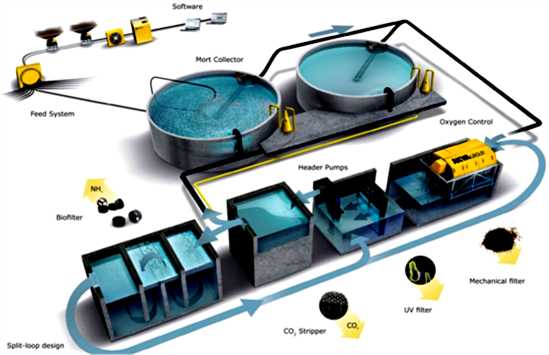
Fig. 1. Recirculation aquaculture system
The study of fish behavior can play an important role in improving our understanding of the exploited RAS ecosystem and adopting an ecosystem approach to fish farming management [3].
Currently, researchers are studying the behavior of fish [4–16], strive to provide broad international discussions for the global synthesis of scientific knowledge about the behavior of fish in exploited ecosystems in order to review and discuss advances in technology and analytical methods used to study the behavior of fish in RAS, and provide information to discuss how goals related to fish behavior can be effectively included in the assessment of the productivity of RAS.
The main attention should be paid not only to the determination of the relationship between the behavior of fish and the automation of RAS in terms of the variability of feed supply [17], water temperature [18], but also to the development of more environmentally friendly and comfortable RAS for habitat. With the use of machine vision and hearing technologies, it is possible to study the behavior and physiology of fish, its movements, light and sound perception in more depth and in detail. Such studies have both practical applications and are fundamental in nature, influencing the scientific assessment of the behavior of living organisms in general and hydrobionts in particular.
Let's divide studies of the behavior of aquatic organisms into five groups.
1. Observation methods and experimental developments for studying fish behavior, including sampling schemes, tools and methods of observation, qualitative and quantitative assessment of fish behavior in RAS, such as machine vision, machine hearing, biotelemetry and other intrusive and non-intrusive technologies.
2. Physiological mechanisms of sensory organs of hydrobionts and their role in fish behavior, including methods used to measure morphological and physiological aspects of fish behavior, biomechanics of sensory organs, the role of hearing, smell, vision, their influence on the behavioral characteristics of fish. Laboratory and field studies of swimming abilities, location and movement of aquatic organisms in the aquatic environment.
3. The influence of group behavior and behavioral interactions in understanding the temporal and spatial interactions of hydrobionts, the dynamics of hydrobionts, including factors affecting clustering and aggregation, aggression, territoriality, competition for food, reproductive behavior, migration and behavior in various habitats.
4. Studies of fish behavior under the influence of multiphysical factors associated with stimuli, motivational effects and conflicts between hydrobionts. Taking into account the above when developing environmentally friendly RAS.
5. Physical, mathematical and simulation modeling of fish behavior in ultrasound, including biomechanical approaches. Modeling of fish accumulations in RAS. Improvement of existing models. Development of methods for automation of management of ultrasound and accumulation of statistical information using machine vision technologies, big data, neuro-technologies. Development of data collection technologies from surveillance devices, sensors, etc.
Problem statement
Fundamentals of biomechanics of hydrobionts are a system analysis and a system synthesis of movements based on quantitative and behavioral characteristics of hydrobionts. Experimental biomechanics of hydrobionts is considered. The essence of the system analysis of biomechanics of hydrobionts is to study the trajectories of movement, speed, acceleration, etc., as well as the reaction of fish to stimuli. The movement and behavioral characteristics of hydrobionts are interconnected. At the same time, it should be borne in mind that the behavior of individual fishes differs from their behavior in a flock. Within the flock, individuals move in concert.
The numerical experiment makes it possible to evaluate the effects of biotic, abiotic and anthropogenic factors on the efficiency of fish farming without conducting expensive field experiments. In order to construct an adequate mathematical and simulation model, it is necessary to clearly formulate the mathematical dependencies of biomechanics of hydrobionts on various design characteristics of RAS and other multiphysical factors. The resulting model can be used both to predict the optimal parameters of the operation of RAS, and at the initial stages of the development of RAS control systems and data collection, without resorting to the use of full-scale systems for monitoring the state of RAS.
Understanding and ability to describe and predict the behavior of fish in the RAS system through mathematical apparatus and computing base contributes to the sustainable development of fish farming, its environmental friendliness, increased productivity and safety of fish stocks.
Scientific studies have shown that fish demonstrate a wide repertoire of reactions to both natural and anthropogenic stimuli. Hydrobionts are able to receive and process a large number of different signals from both other individuals and external ones, and are also capable of learning [19]. As a result, fish can experience stress leading to behavioral deficits that can increase their mortality. All this must be taken into account when developing the model.
Technologies that can be used to observe the behavior of fish clusters have made significant progress. With the use of a modern computing base, it is now possible to widely introduce various machine vision and hearing technologies. These technologies in more detail and in a wide range will allow scientists and fish breeders
to observe and, in the future, effectively manage the behavior of fish in RAS as a closed ecosystem, and designers – to design effective RAS. The use of a complex of various machine vision and hearing devices (video recorders, acoustic sensors, listening devices, etc.) will allow you to register and measure in real time many parameters of fish farming facilities, ultrasound equipment and the environment, to identify the type of fish based on specific noises made by fish, etc.
Studies of fish behavior will increase efficiency in the automation of RAS testing, which in turn will contribute to an increase in productive indicators and environmental friendliness, reducing economic costs and the cost of an aquaculture product for the end user.
Many studies of fish behavior related to the observation of dynamic and spatial patterns in RAS often remain incomplete due to the lack of the possibility of testing the hypotheses put forward. It is possible to solve the problem through interaction between ichthyologists, fish breeders, ecologists, designers of RAS and specialists in the information industry, which requires an interdisciplinary approach to ongoing scientific research.
The world's natural fish stocks are being overexploited and depleted. It is necessary to assess the impact of this factor on the reproduction of fish stocks and ensuring food security. To assess reproduction, it is necessary to study the behavior of fish under the influence of various external influences, to develop appropriate mathematical and simulation behavioral models. It is also necessary to solve the problem of artificial reproduction of fish stocks, including with the use of ultrasound. It is necessary to take into account risk factors when moving hydrobionts from artificial to natural habitat. These risks can be predicted on behavioral models using computational tools.
The recirculation aquatic system is an unnatural habitat for fish. The population density can be many times higher than the density in the natural habitat, and the living space is very limited. In this regard, the fish population in RAS is experiencing stress, which contributes to a decrease in the productivity of the fish farm and the deterioration of its environmental friendliness. Solving the problem of stress ability requires a special approach to the design and operation of ultrasound, including interdisciplinary. In addition, an increase in the number of hydrobionts can lead to an additional load on the ultrasonic system and, thereby, reduce its service life and repair intervals.
According to the authors, the time has come to develop new methods and technologies of fish farming using technical means of RAS, taking into account the modern development of computing technologies.
To review in a broader context and with greater attention the existing approaches to growing fish in RAS, focusing on the use of machine vision and hearing technologies, as well as technologies for automating the cultivation of aquatic organisms.
The study of fish behavior can play an important role in improving our understanding of the exploited RAS ecosystem and adopting an ecosystem approach to fish farming management. Currently, researchers are studying fish behavior, seeking to provide broad international discussions for the global synthesis of scientific knowledge about fish behavior in exploited ecosystems of the RAS in order to review and discuss advances in technology and analytical methods used to study fish behavior in RAS, and provide information for discussion of how the goals related to behavior fish, can be effectively included in the assessment of the productivity of ultrasound. The main attention should be paid not only to determining the relationship between the behavior of fish and the automation of RAS in terms of the variability of feed supply, water temperature, but also to the development of more environmentally friendly and comfortable RAS for habitat. With the use of machine vision and hearing technologies, it is possible to study the behavior and physiology of fish, its movements, light and sound perception in more depth and in detail. Such studies have both practical applications and are fundamental in nature, influencing the scientific assessment of the behavior of living organisms in general and hydrobionts in particular.
Methods
Let's divide the studies of the behavior of hydrobionts of one species in the field of physical modeling into groups.
1. Methods of observation, laboratory and experimental studies of one individual.
2. The influence of group behavior and behavioral interactions in understanding the temporal and spatial interactions of hydrobionts, the dynamics of hydrobionts.
3. Studies of fish behavior under the influence of multiphysical factors associated with stimuli, motivational effects and conflicts between hydrobionts.
4. Multiphysical modeling of characteristics and processes of hydrobionts [20].
5. Assessment of the large-scale effect of multiphysical modeling of characteristics and processes of hydrobionts.
Fundamentals of biomechanics of hydrobionts – system analysis and system synthesis of movements based on quantitative and behavioral characteristics of hydrobionts. Experimental biomechanics of hydrobionts is considered. The essence of the system analysis of biomechanics of hydrobionts is to study the trajectories of movement, speed, acceleration, etc., as well as the reaction of fish to stimuli. The movement and behavioral characteristics of hydrobionts are interconnected. At the same time, it should be borne in mind that the behavior of individual fish individuals differs from their behavior in a flock. Within the pack, individuals move in concert.
To substantiate the rules of physical similarity of hydrobionts of the same species, it is necessary to separate the physical parameters and characteristics of hydrobionts. When considering the similarity of biomechanics of hydrobionts on the basis of the theory of dimensionality, the scales of similarity of hydrobionts with dynamic similarity are obtained through the scale of geometric characteristics of Cl: mechanical, hydrodynamic, thermodynamic, light, acoustic, and optical values.
We are considering one type of hydrobionts. For the nature “n” we take a mature fish, for the model “m” a juvenile of a hydrobionts (Fig. 2).
|
a |
b |
Fig. 2. Hydrobiont model (carp fingerling) (a) and full-size hydrobiont (mature carp fish) (b) of a hydrobionts
For the linear scale Cl, we take the ratio of geometric characteristics of hydrobionts (Fig. 3).
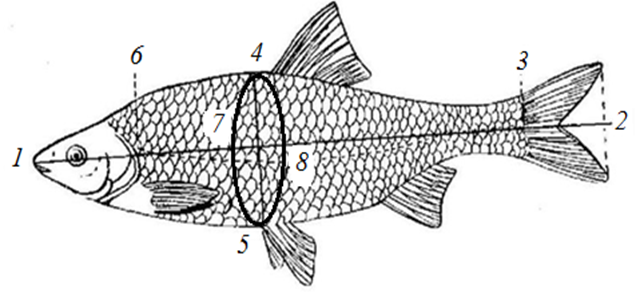
Fig. 3. Geometric characteristics of the hydrobionts: 1-2 – zoological body length (L);
1-3 – body length without tail fin, fishing length (l); 4-5 – the highest body height (H);
1-6 – head length (C); 7-8 – the greatest thickness body (Z)
The scale of linear dimensions Cl is determined based on the expression
Cl = Ln / Lm = ln / lm = Hn / Hm = Cn / Cm = Zn / Zm.
In this case, the scale Cl is determined by rate of characteristics with “n” and “m” indexes. The scale of the fish body density is equal to Cρ = 1.
The main scales of similarity of various physical quantities of hydrobionts relative to the Cl scale given in [21-24]. The Cl scale is a set parameter.
Results and discussion
The criteria of similarity of biomechanics of hydrobionts are determined on the basis of the theory of dimensionality of physical quantities. This method is simple and meets all the requirements for it. It is based on reducing the dimensions of physical quantities. At the same time, it ensures the fulfillment of the main conditions – parameter relations. The main property of this method is that in some cases the equations of processes occurring with hydrobionts are not known, not to mention multiphysical processes, but the transformation of a physical quantity through the scale of the geometric characteristics of Cl is known, and thus any number of similarity criteria can be obtained. It is important to define the main criteria of multiphysical similarity.
The Froude criterion Fr, taking into account the scale of the acceleration of free fall Cg, affects the dynamic processes of hydrobionts. Since the condition Cg = 1, is observed on the Earth's surface, and it is not possible to provide Cg = Cl–3/2, then, provided that the Froude number Fr is self-similar, it is possible to neglect this criterion.
To determine the scale of similarity and similarity criteria, computer programs “Scales of multiphysical similarity of fish farming processes” (Fig. 4) and “Criteria of similarity of fish farming processes” (Fig. 5) have been developed.
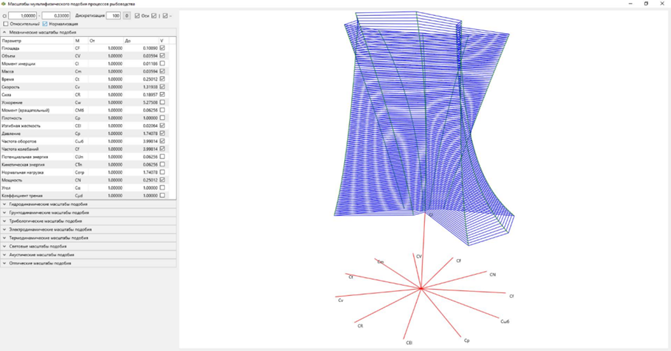
Fig. 4. Computer program “Scales of multiphysical similarity of fish farming processes”
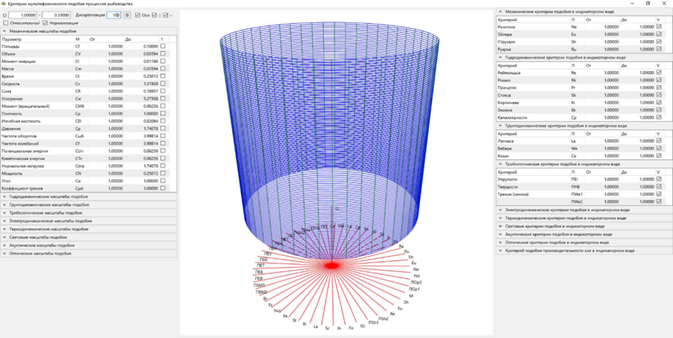
Fig. 5. Computer program “Criteria of similarity of fish farming processes”
Fig. 6 shows simulation models of mature fish and hydrobiont fingerlings.
|
a
|
b |
Fig. 6. Simulation models of nature and hydrobiont fingerlings:
hydrobiont model (carp fingerling) (a); full-size hydrobiont (mature carp fish) (b)
Computer programs provide calculation of scales and criteria of similarity of fish farming processes. Moreover, the ranges of using the scale of the frequency of water circulation (the number of revolutions per second) are set in the range
Cf = Cv / Cl = (1÷4)
where Cv is the scale of the water flow velocity.
The article considers the solution of the problems of describing the biomechanics of hydrobionts in closed water supply installations. In these installations, only one species of hydrobionts are grown at the same time. For example, sturgeon, carp, etc. The importance of studies of biomechanics of aquatic organisms in certain habitat conditions, in our case in an artificial enclosed space, with artificial lighting, feeding, cleaning system, etc., is due to the need to increase fish productivity and environmental friendliness of fish farming, which requires automation of the growing process.
Automation tasks require a preliminary mathematical description of processes in order to build simulation models. In turn, for a mathematical description of the growth process of a growing object, it is necessary to derive mathematical dependencies linking the target characteristics of the hydrobionts with the initial data of breeding conditions and a set of characterizing parameters of the object itself, including behavioral ones.
In order to adequately determine the set of characterizing parameters, it is necessary to conduct experiments in full-scale conditions. Conducting field experiments as part of the production cycle is difficult due to the need to intervene in the process of fish breeding. In this regard, the task of transferring full-scale experiments to model ones becomes urgent. In relation
to the RAS, the problem can be solved by using a reduced physical model of the installation (part of it), juveniles instead of adult fish as an object of research, etc. Experiments on such a physical model of a full-scale installation can be carried out in laboratory rather than in-situ conditions, which simplifies access to the experimental base, speeds up and reduces the cost
of the process of conducting experiments.
The output data obtained as a result of model experiments must be brought to the corresponding full-scale output data. To do this, the authors propose to use the multiphysical similarity of hydrobionts of the same species, the similarity of juvenile and adult fish, based on the theory of physical similarity of A. A. Nedostup. The essence of the multiphysical similarity of hydrobionts
of one species consists in describing the movement, speed, acceleration, mass, size, response to stimuli, and other characteristics of an individual, taking into account that the behavior of individual fish differs from their behavior in a flock.
Based on the theory of dimensionality, the authors obtained scales and similarity criteria for hydrobionts with dynamic similarity through the scale of geometric characteristics of Cl: mechanical quantities; hydrodynamic quantities; thermodynamic quantities; light quantities; acoustic quantities; optical quantities. The method is based on reducing the dimensions of physical quantities while ensuring the fulfillment of parameter relations. The main property of this method is that in some cases the equations of processes occurring with hydrobionts are not known, not to mention multiphysical processes, but the transformation of a physical quantity through the scale of the geometric characteristics of Cl is known, and thus any number of similarity criteria can be obtained.
1. Шутов В. А., Кузьмин С. Ю., Востроушкин Д. Н. Формирование управляемой информационной среды гидробионтов как основа повышения эффективности рыболовства и аквакультуры: моногр. Калининград: Изд-во КГТУ, 2012. 307 с.
2. Об аквакультуре (рыбоводстве) и о внесении изменений в отдельные законодательные акты Российской Федерации: Федеральный Закон от 02 июля 2013 г. № 148-ФЗ (последняя редакция). URL: https://base.garant.ru/70405638/ (дата обращения: 21.06.2023).
3. Павлов Д. С. Биологические основы управления поведением рыб в потоке воды. М.: Наука, 1979. 319 с.
4. Аминева В. А., Яржомбек А. А. Физиология рыб. М.: Лег. и пищ. пром-сть, 1984. 200 с.
5. Уэбб П. У. Корреляция между формой и функцией плавания у рыб // В мире науки. 1984. № 9. С. 34-48.
6. Колескин В. Н., Колескин В. В. Математическое моделирование в биомеханике плавания рыб // Ярослав. педагог. вестн. 2011. № 1. С. 48-60.
7. Ben Tuvia A., Dickson W. Report // Proceedings of the Conference on Fish Behaviour in Relation to Fishing Techniques and Tactics (Bergen, Norway, 19-27 October 1967). 1968. V. 1. P. 47.
8. Wardle C. S., Hollingworth C. EFish Behaviour in Relation to Fishing Operations // Selected papers from a Symposium held (Bergen, 11-13 June 1992). ICES Marine Science Symposia. 1993. 215 p.
9. Takagi T., Moritomi Y., Iwata J., Nakamine H., San-nomiya N. Mathematical model of fish schooling behav-iour in a set-net // ICES Journal of Marine Science. 2004. N. 61. P. 1214-1223.
10. Nakamine H., Sannomiya N. Effect of autonomous decentralization mechanism in fish behaviour // Transactions of Institute of Systems, Control and Information Engineers. 1995. N. 8. P. 350-356.
11. Gun-Ho Lee, Chun Woo Lee, Young-Bong Kim, Pingguo He. Simulating the behavior of Atlantic mackerel and their capture by pelagic trawls // 8th International workshop - Methods for the Development and Evaluation of Maritime Technologies DEMAT 2007. Germany: Rostock, 2007. V. 5. P. 285-295.
12. Яржомбек А. А. Образ жизни и поведение промысловых рыб. М.: Изд-во ВНИРО, 2016. 200 с.
13. Abdelaziz S., Al-Nuaimi A., Chugh P., Bui M. D., Rutschmann P. Algorithms for tracking of fish path using image processing // Proc. of the 2nd IAHR European Con-gress, 27 (TU München). TU München, 2012, Topic Ecohydraulics, Paper D10, p. 6.
14. Abdelaziz S., Bui M. D., Hayashida K., Rutschmann P. Numerical Simulation of flow pattern inside a pool and weir fishway // Water infinitely deformable but still limited. Proc. of the 2nd IAHR European Congress, 27 (TU München). TU München, 2012, Topic Ecohydraulics, Paper D11, p. 6.
15. Abdelaziz S., Jhanwar R., Bui M. D., Rutschmann P. A numerical model for fish movement through culverts // Proc. of the 34th IAHR World Congress Brisbane. Australia: IAHR, 2011. P. 2736.
16. Goodwin R. A., Nestler J. M., Anderson J. J., Weber L. J., Loucks D. P. Forecasting 3D fish movement behavior using a Eulerian-Lagrangian-agent method // Ecol. Model. 2006. V. 192. P. 197-223.
17. Ивлев В. С. Экспериментальная экология питания рыб. М.: Пищепромиздат, 1955. 242 с.
18. Голованов В. К. Температурные критерии жизнедеятельности пресноводных рыб. М.: Полиграф-Плюс, 2013. 300 с.
19. Лещева Т. С., Жуков А. Ю. Обучение рыб: экологические и прикладные аспекты. М.: Наука, 1989. 109 с.
20. Недоступ А. А. Правила физического моделирования динамических процессов рыболовства // Рыбное хозяйство. 2011. № 4. С. 97-98.
21. Недоступ А. А., Ражев А. О. К теории термодинамического подобия установок замкнутого водоснабжения для выращивания гидробионтов // Изв. Калинин-град. гос. техн. ун-та. 2020. № 57. С. 40-53.
22. Недоступ А. А., Ражев А. О., Хрусталев Е. И. Обоснование масштабов подобия световых величин установок замкнутого водоснабжения для выращивания гидробионтов // Вестн. Астрахан. гос. техн. ун-та. Сер.: Рыбное хозяйство. 2020. № 3. С. 61-69.
23. Недоступ А. А., Ражев А. О., Хрусталев Е. И. Обоснование масштабов подобия акустических величин в установках для выращивания гидробионтов // Вестн. Астрахан. гос. техн. ун-та. Сер.: Рыбное хозяйство. 2020. № 4. С. 29-36.
24. Недоступ А. А., Ражев А. О., Хрусталев Е. И., Молчанова К. А. Обоснование масштабов подобия оптических величин в установках для выращивания гидробионтов // Вестн. Астрахан. гос. техн. ун-та. Сер.: Рыбное хозяйство. 2021. № 1. С. 7-12.

